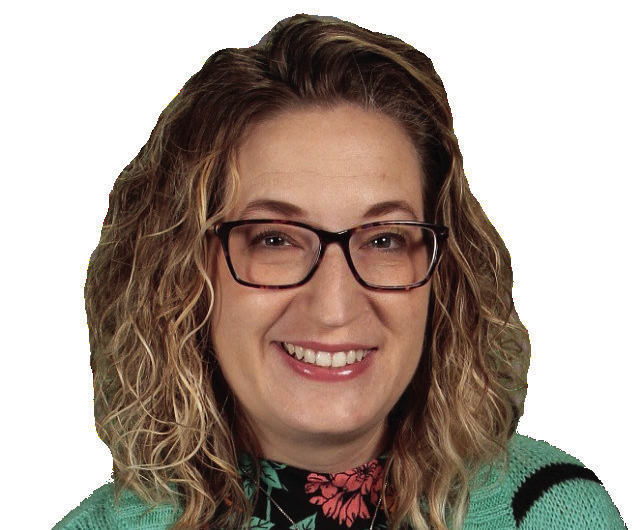Kyle Troutman: Behind the education curtain

It’s not every day we have the state’s leaders in our backyard. That was the case on Thursday as the entire State Board of Education, the commissioner of education and multiple staffers, 21 in total, met with Cassville’s superintendent and assistant superintendent, as well as multiple school board members.
Prior to their arrival, the anticipation was high. Two students greeted the parties at the doors of the high school, smiling and shaking hands with each person they ushered through.
Everyone was then shepherded into the library, where Superintendent Merlyn Johnson gave a presentation on the Missouri School Improvement Program (MSIP6), Continuous School Improvement Plan (CSIP) and Annual Performance Report (APR).
Most of the discussion centered around items I have recently reported, like how Cassville is focused on attendance to raise its APR score, and how the CSIP is used to target goals district-wide.
Structurally, Cassville’s CSIP is sound. Administrators, teachers and community members meet by invite annually over multiple days to assess, update and implement the plan. The district also ties the plan to each of its agenda items at board meetings, keeping the narrative focused and on track.
The document drew high praise from Kent Medlin, DESE area supervisor of instruction, and from Charlie Shields, president of the Missouri Board of education. Medlin called Cassville a shining star in southwest Missouri, bragging on the CSIP as dynamic and accountable. Shields praised the plan as a roadmap to success for the district and an example to area districts.
Hearing how ahead Cassville is when it comes to planning is encouraging. With an APR score lower than it would like, the district has specific goals and specific paths to reach them. Shields said when he was a board member at Mid-Buchanan, his board focused on things like buying buses and making building upgrades, never formulating something as in-depth and intent as the CSIP.
As strong as the plan is, Cassville also has to roll up its sleeves and do the work.
Of the issues discussed at the meeting, three stood out — attendance, behavior and teacher retention.
Cassville has had exceptional attendance over the years, but COVID-19 not only did a number on the numbers then, it continues now.
Assistant Superintendent Traci Mitchell said staff are having to re-train parents and students to still come to school even when they may be feeling under the weather. Parents became trained from 2020-2022 to keep children home if they show any symptom of COVID, and there are many. Now, that kind of caution is no longer as necessary.
As a parent, I get what Mitchell is saying. Without reaching attendance goals, the district may be subject to funding cuts or accreditation issues. My daughter, however, will undoubtedly be begging to go to the nurse’s office the second she walks through the classroom door if she has just the slightest hint of a cough.
Our quandary in the morning when that cough comes is should we send her to school only to have to go retrieve her in the next hour, or should we just call it and go on with the day and try again tomorrow?
Probably two out of three times, I select the latter option. My action is always based on what is best for my child in that moment, not necessarily the school district and its attendance percentage. However, if I send her to school and the nurse sends her home, that day’s attendance does count.
Johnson said we have a new generation of parents raising children now, and that struck me. I am in that new generation of parents. Am I doing it right? I believe so, but my standards and the district’s standards certainly vary in areas.
It is a bit disheartening to think we are a “new generation” of parents that are making things more challenging for schools. I hope we can reconcile that.
Bringing back the attendance rewards post-COVID should eventually help. The key is the same as it has always been: incentivize kids to want to come to school.
Student behavior, or “culture and environment in the classroom” as Shields termed it, may be more of an issue than I thought. Teachers in some cases are leaving education because they cannot deal with today’s youth.
That’s frightening. One could say this is just a new generation of kids, I suppose. But, if the new generation of parents is not engaged enough to send their kids to school, and when they do, the new generation of kids misbehave, where does that leave us?
I wonder if 20 years ago, the same was being said about me and my parents?
Even after attendance and behavior, teacher retention was the most dire topic. Salary, of course, plays a role, but there’s much more to it.
Majoring in education is no picnic. About a third of all college undergrads drop out, and education has seen a major shift.
According to the Education Data Initiative, 176,310 bachelor’s program graduates majored in education in 1970. Fifty years later, that figure has dipped to 82,621. STEM, business, healthcare and even liberal arts and sciences are all more sought degrees than education.
Cassville is not alone in the challenge of hiring and retaining good teachers, though it does have a tradition of excellent ones who shape young minds for decades.
I hope the state Board of Education heard these challenges and will advocate for solutions. Shields did mention it started the Blue Ribbon Commission, aimed at teacher hiring and retention. From our conversation, he seemed to be adequately in-touch with the needs of rural district compared to urban ones.
While Cassville celebrates its APR successes in areas like graduation rate, it will also have to meet the challenges posed by a new generation of individuals in the Ozark-landscaped world of public education.
Kyle Troutman has served as the editor of the Cassville Democrat since 2014. In 2017, he was named William E. James/Missouri Outstanding Young Journalist for daily newspapers, and in 2022, he won a Golden Dozen Award from ISWINE. He may be reached at 417-847-2610 or ktrout-man@ cassville-democrat.com.




